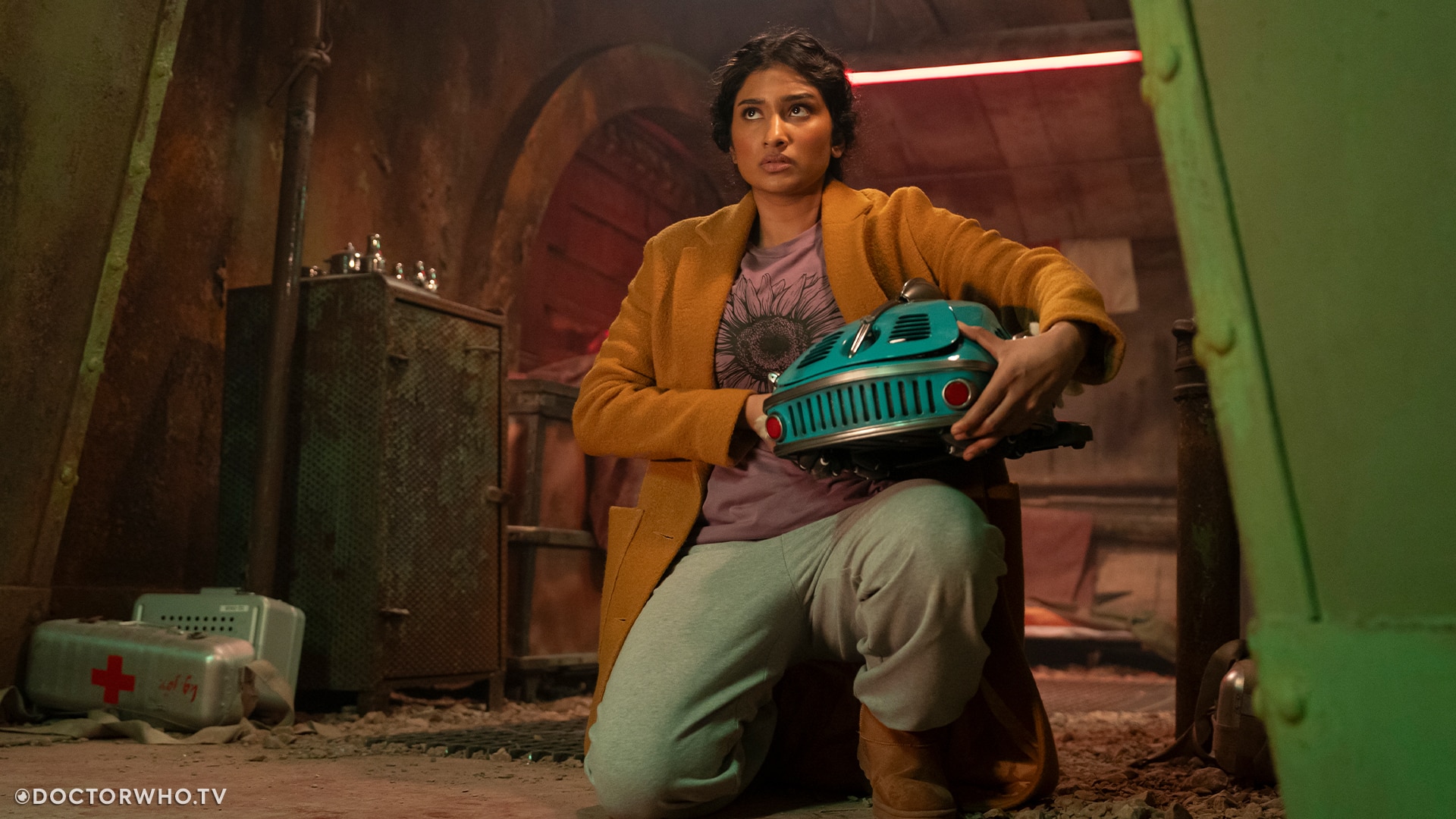April 16, 2025
Bad Wolf prop designer Michael van Kesteren answers questions on the design and operation of everyone’s favourite Polish-Bot from ‘The Robot Revolution’…
The Robot Revolution saw the debut of exciting new villains, and a brand new companion for the Doctor in Belinda Chandra. But one stand-out character who captured the fans’ hearts and helped save the day was Scoot, the Polish-Bot!
We spoke to Scoot’s designer Michael van Kesteren, prop designer at Bad Wolf Studios, about how he and his team brought the plucky little robot to life…

Important first question: are you aware of how much everyone loves Scoot?
It’s lovely to see everyone quote “polish polish!”. We all loved Scoot’s design in the art department, but you’re going to be in a bit of a bubble, so you never really can be sure how people will react, though you’re always hoping for the best. Though this time we think we nailed it.
What other robots of sci-fi did you take inspiration from in Scoot’s design, if any?
Scoot’s spiritual inspiration came from the likes of Wall-E, R2-D2, Imperial mouse droids, Mo (the grumpy little cleaner robot from Wall-E), Johnny 5 (Short Circuit), BB-8… His physical appearance is based on retro tech from the '50s, which includes home appliances like vacuum cleaners and fridges, which had lovely swoopy lines, chrome and aluminium castings, and also 1950s cars.
There’s a lot of 1950s Chevrolet Bel Air and classic Fiat 500 in him. His faceplate is reminiscent of a car of the era’s brake light cluster, his back is a rearranged Fiat 500 and the little light on top is reminiscent of a fender indicator light, but restyled to look like a teeny hard hat, hence the orange light. His colour is 1950s Chevy Bel Air turquoise blue.

Can you tell us a bit about the combination of robotics and puppetry that went into Scoot’s performance?
By using mecanum wheels (a system of small roller-like wheels that allow for more dynamic movement), we weren’t limiting the puppeteers to the simple forward/backward, left/right and pivot motions you get with tracks or standard wheels. Scoot can now glide (loudly) in literally any horizontal direction. He also had a servo to lift his body up slightly, mostly to clear obstructions on the floor, but also to get a bit of additional movement upwards for a bit of character.
His eye had a side-to-side and up-and-down, but also a blink, which just adds a bit more character. While I did the mechanical design, all the motion was programmed by Rob Hearne; who as a result knows a lot more maths than before, and learned to be extremely patient with my requests.
To finish Scoot’s motion off a bit more, we needed his arms to be able to move. They didn't have any animatronic mechanisms, because they were simply too spindly and there’s very little room inside the body left to add that without resorting to adding another robot to the lineup that would only be able to move the arms and nothing else. They could be locked off in a pose, though. When unlocked, Eliot and Josh would rod-puppeteer them. Simple, but effective, far less prone to failure on the day, and considering everything else on Scoot was practical, there was little else for VFX to clean up as a result.
We were pressed for time to build the two versions he had already (one being the full motion version, the other being the static version that could be opened up), so adding a third would have stressed the already very busy team beyond capacity. In fact, anything other than rod-puppeteering the arms wasn’t ever considered.
What are some of your other favourite designs that fans can look forward to seeing in Season 2?
There’s a few gadgets, but what I’m also really, really proud of shows up in the finale… But telling that would be a spoiler!
Discover more about Scoot in The Robot Revolution.








